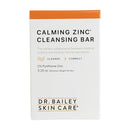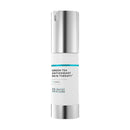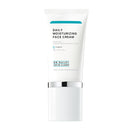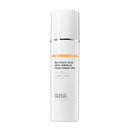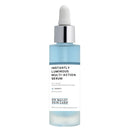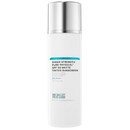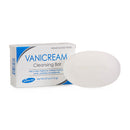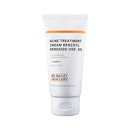Tips for Blepharitis – Do you have lash line swelling and redness?

Dermatologic skin problems can cause blepharitis.
This includes rosacea and seborrheic dermatitis. The condition can be mild or severe – chronic or occasional.
Whether the cause of your blepharitis is seborrhea or rosacea, the symptoms are similar. They include redness, swelling and irritation of the eyelash line. Your eyes can feel gritty and irritated. There may be a greasy feel to the skin with crust and scale situated along the lash line, and that gets stuck to your eyelashes.
The condition involves the skin, eyelash follicles and lash line oil glands. There are many oil glands along the lash line and they become inflamed when you have blepharitis. They may look like a clogged pore on your eyelash line or a tiny white bump called a milia cyst. Eyelashes may fall out or grow haphazardly because of the inflammation.
It is important to see a doctor if simple hygiene measures I mention below do not improve your blepharitis because infection and eye damage can occur when the lash line is chronically inflamed.
Tips for Blepharitis
How do you know if your blepharitis is due to seborrhea, rosacea or another cause?

Seborrheic blepharitis usually happens when you have really severe dandruff in the more usual areas like your scalp and face, but it can also happen by itself. As with the other manifestations of dandruff, we don’t know the cause of seborrheic blepharitis.
Additionally, the condition tends to clear and then relapse. To learn more about seborrheic dermatitis, click here.
 Rosacea blepharitis usually happens in the company of rosacea, which is another common facial rash. Rosacea occurs more on the “apples” of the face such as the cheeks, mid-forehead, chin, and nose. It can involve pimples or red bumps, flushing, facial sensitivity, and stinging. It can also be accompanied by enlargement of oil glands.
Rosacea blepharitis usually happens in the company of rosacea, which is another common facial rash. Rosacea occurs more on the “apples” of the face such as the cheeks, mid-forehead, chin, and nose. It can involve pimples or red bumps, flushing, facial sensitivity, and stinging. It can also be accompanied by enlargement of oil glands.
Like seborrhea, rosacea tends to be persistent, with remissions and flares. Rosacea blepharitis is associated with an abundance of Demodex mites in the pores. These little mites are not uncommon in human pores, but at times, they grow abundantly and cause inflammation. Learn more about rosacea here.
Treatment for Blepharitis
My top recommendation for controlling mild bouts of blepharitis is to wash your facial skin daily with Calming Zinc Soap. This gentle, and naturally made bar soap is fortified with pyrithione zinc, an ingredient used in dandruff shampoos. Calming Zinc Soap is hydrating to facial skin while at the same time it removes oils that clog pores, and delivers a layer of pyrithione zinc to fight both rosacea and dandruff.
Creating a daily facial hygiene routine that involves cleansing the face with Calming Zinc Soap is often sufficient to prevent flare-ups of blepharitis. Should the blepharitis worsen however, I recommend adding warm compresses and dilute baby shampoo treatment to help remove oil gland and follicle-clogging crust and debris.
Dr. Bailey’s Warm Compresses and Baby Shampoo Lash Line Treatment for Blepharitis
To treat blepharitis from rosacea or seborrhea, I recommend the following two steps.
 1) Wash your facial skin with Calming Zinc Soap once or twice a day. Close your eyes tightly to keep the soap from entering your eyes. Lather the soap on the facial skin including the skin of the eyelids. This allows the active ingredient to reach the lash line. Rinse well. It is important to know that pyrithione zinc will sting and irritate the eye if it actually gets into it so it’s important that none does.
1) Wash your facial skin with Calming Zinc Soap once or twice a day. Close your eyes tightly to keep the soap from entering your eyes. Lather the soap on the facial skin including the skin of the eyelids. This allows the active ingredient to reach the lash line. Rinse well. It is important to know that pyrithione zinc will sting and irritate the eye if it actually gets into it so it’s important that none does.
2) If the blepharitis is severe or if the simple hygiene step of washing with Calming Zinc Soap does not control the swelling and crust, then add warm compresses and the following dilute baby shampoo treatment:
- Prepare a bowl of dilute baby shampoo by placing a small squirt of baby shampoo in a small bowl with about a cup of warm water. Stir to disperse the shampoo in the water evenly.
- Soak the lash line skin with a warm, plain water saturated on a wash cloth for 5 minutes. (Alternatively, you can take a warm shower where your face is wet and your lash line is getting hydrated by shower water on your facial skin.)
- After 5 minutes, pull down on the eyelash line and dip a cotton tipped applicator into the dilute baby shampoo solution.
- Holding the lash line taught with a finger, gently run the cotton-tipped applicator along the lash line to help remove and buildup of oil, dead skin cells and microorganisms that clog the lash line pores (oil glands).
Oil, crust, dead skin cells and microorganisms can clog the pores on the eyelash line. - Dr. Bailey
- Repeat this several times using a clean, cotton-tipped applicator dipped in the shampoo solution. Both the upper and lower lash line need to be cleaned in this way.
- When done, rinse your eyelids and lash line with warm water to remove the baby shampoo residue.
- This process is repeated once or twice a day as needed. Clogged glands and crust can worsen the inflammation of blepharitis. Curiously, the skin germ called Pityrosporum yeast and the Demodex skin mite are often involved in blepharitis, and removing eyelash line crust helps to discourage their growth.
Beyond these two interventions, blepharitis can be tricky to treat because of the proximity of the lash line to the delicate eye itself. If this treatment method is not working then it’s time to ask for a doctor’s help.

If you found this helpful and would like to get your skin care information straight from a Board Certified Dermatologist with 35 years of practice experience, I invite you to sign up for my free eNewsletter here.
Author: Dr. Cynthia Bailey M.D. is a Board Certified dermatologist practicing dermatology since 1987. She has done well over 200,000 skin exams during her career and authors the longest running physician written skin health blog in the world.


